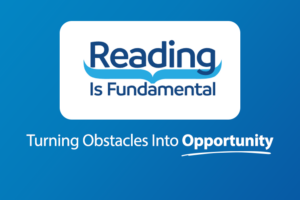Charisse Browner | June 19, 2014
Follow the “ICEE” Rule When Communicating to Employees About Your Workplace Giving Program
 Summer is here and in full swing! I remember when I was a kid, during the summer months we were as care free as the warm breeze blowing. Not a care in the world, except for wondering what would be our next adventure. Summer was always special because school was dismissed for three long months, and we spent our summers with my grandparents in San Diego. All my cousins were there too and we would have daily adventures playing outside (there was no such thing as a Wii, Xbox or even Atari – I’m dating myself here). We would play until – say it with me – “the street lights came on!” There was nothing better than climbing a fence or tree (just because we could), make mud pies (those rubber tree plants made great pie toppings), and used the ice plants from the neighbor’s yard to write on the sidewalk (who needed chalk!). Oh the good old days!
Summer is here and in full swing! I remember when I was a kid, during the summer months we were as care free as the warm breeze blowing. Not a care in the world, except for wondering what would be our next adventure. Summer was always special because school was dismissed for three long months, and we spent our summers with my grandparents in San Diego. All my cousins were there too and we would have daily adventures playing outside (there was no such thing as a Wii, Xbox or even Atari – I’m dating myself here). We would play until – say it with me – “the street lights came on!” There was nothing better than climbing a fence or tree (just because we could), make mud pies (those rubber tree plants made great pie toppings), and used the ice plants from the neighbor’s yard to write on the sidewalk (who needed chalk!). Oh the good old days!
One of the best summer treats I remember was a pitcher of Kool-Aid my grandmother would sit outside (because we could not go “in and out of the house”), or on special (and hotter) days, she’d let us make our own ICEE. Strange what your mind remembers from childhood, isn’t it?
The name, ICEE, may take me to my local mart or gas station when I cannot bare the summer heat and need to cool down with my favorite Cherry flavored brain-freezer, but more relevant to my life today, it also stands for something more meaningful.
I am a volunteer, a helper, and a giver. I love being able to give back (because it’s the right thing to do) and helping others to do the same. Volunteering and donating a portion of my salary to charities that have a personal connection to me is a lifestyle, not something I am made to do. I volunteer and give because it makes me feel good, just like that ICEE did when I was a kid.
Like the long summer months you spent as a child away from home, millions of people on average spend at least one-third of their waking hours – five days a week – away from home at their place of employment. Being such, the workplace has become a “culture,” and smart employers know the value of employee engagement to keep employees satisfied and to attract new employees, particularly Millennials. Smart employers have read the research like Snapshot 2014: Rising Tide of Expectations and Achieve’s newly-released 2014 Millennial Impact Report to learn new trends and best practices to include in an employee engagement workplace giving program. Smart employers also seek the help of experts like America’s Charities, to raise and help leverage billions of dollars for charities by strategically engaging and connecting their business to the nonprofit sector.
Yes, it’s summer and a great time to begin thinking about how to help your employees “feel good” this coming fall which is considered the “giving season.” In preparation for your engagement activities this fall, plan to engage your employees in a fun event and include the following “ICEE” definition when communicating to employees your annual giving program:
- Impact – The employee’s donation, no matter the size, makes an impact. Payroll deduction donations are aggregated funds given by many donors across the nation and abroad. One dollar or ten is making a much larger impact than you may think.
- Credibility – Donors want to know that the charities offered are credible. If your campaign includes member charities from a reputable federation like America’s Charities, your employees can rest assured that the research is done for them. America’s Charities member charities are vetted in order to be accepted as a member and offered as a charity choice. Members are held to a very high standard that employee donors expect and deserve.
- Efficiency – How well your program is communicated, the amount of time your team spends planning and implementing the program, offering charity choices that your employees want and that matter, gaining employee participation and support of the program is a huge undertaking. These are some of the deliverables that make your program highly efficient and successful and those that are involved in implementing the program should be applauded.
- Ease – Workplace giving via payroll deduction is a lasting commitment by the donor and typically a one-time process. More important and equally impressive, is when the employer shows commitment to the program and communicates this by adopting and announcing its no-fuss matching gift program. Remember: A supportive employer begets an engaged employee.
Contact us for more information about employee engagement, workplace giving and volunteering, or to discuss findings from Snapshot 2014: Rising Tide of Expectations or the Achieve’s 2014 Millennials Impact Report.
Get Resources and Insights Straight To Your Inbox
Explore More Articles
Workplace Fundraising + Volunteering Summit (April 2nd and 3rd, 2025)
Join us in attending this virtual summit! The America’s Charities team is joining up with other leading voices in the workplace giving space for a…
Read ArticleThe Time to Act is Now
The results of the 2024 National Assessment of Educational Progress (NAEP) are in, and the findings are, in a word, heartbreaking. This assessment serves as…
Read ArticleOpen Position: Non-Profit Account Manager, Employee Assistance Funds & Scholarships (Remote – Full Time)
We are professional, agile, customer-centric and our goal is to inspire employees and organizations to support causes they care about. We help nonprofits fundraise unrestricted,…
Read ArticleGet Resources and Insights Straight To Your Inbox
Receive our monthly/bi-monthly newsletter filled with information about causes, nonprofit impact, and topics important for corporate social responsibility and employee engagement professionals, including disaster response, workplace giving, matching gifts, employee assistance funds, volunteering, scholarship award program management, grantmaking, and other philanthropic initiatives.




